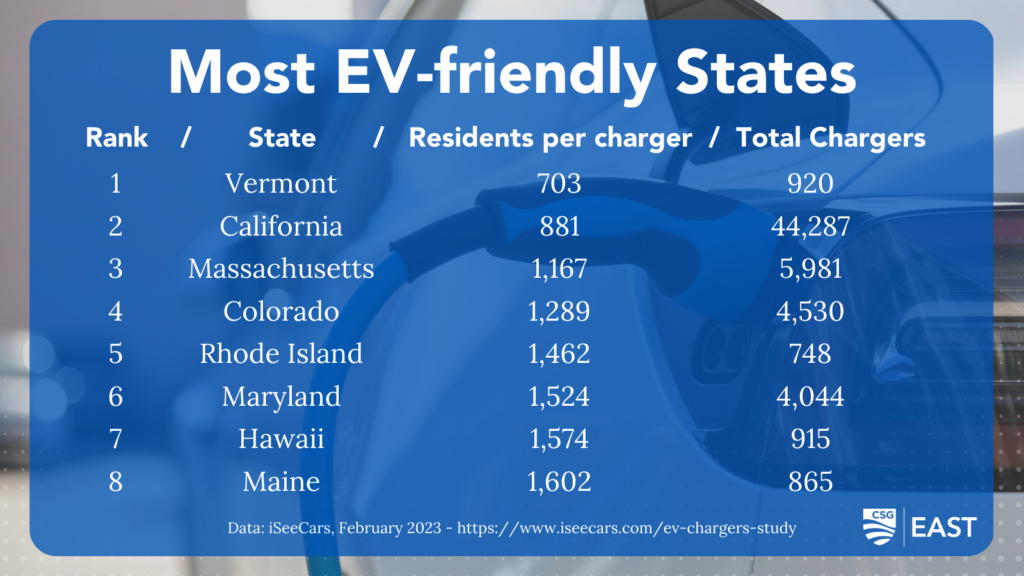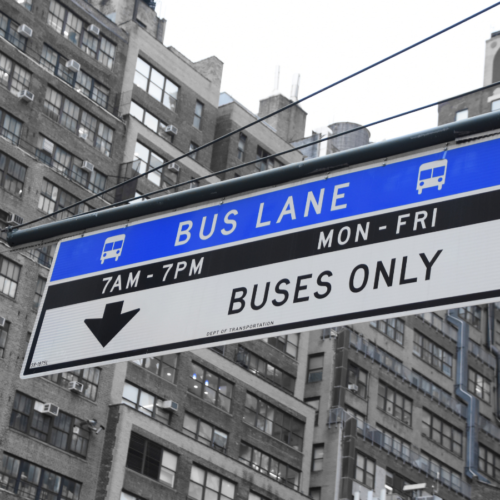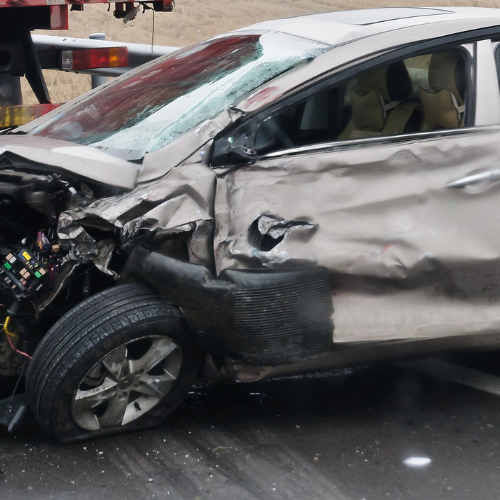Eastern states finding early success in developing Electric Vehicle infrastructure
A new study places Vermont #1 in EV chargers per resident
In just the past two years, the market share of electric vehicles (EVs) has more than doubled, rising from 2.7 percent to 6.4 percent by the end of 2022.
New EVs are rolling onto the market at a blistering pace. As motor vehicle manufacturers race to compete for market share, companies like Ford, Chevy, and Hyundai are investing significantly in their all-electric vehicle lines, while Tesla’s Model Y and Model 3 continue to vastly outsell the competition.
The message is clear: the future is electric.
But, as with most innovations, that future may not reach everyone’s zip code (or driveway) at the same time.
One important step along the way, analysts say, is establishing charging infrastructure.
While most electric vehicle owners will have installed an in-home charging system for their vehicles, there is an increasing need and demand for more public charging stations. These stations — which are especially important for EV owners living in apartments, condominiums, and other multifamily housing units — are critical not only for convenient overnight charging, but also for extending the range of electric vehicles on long-distance trips.
A recent survey of publicly available EV charging stations identified just under 150,000 nationwide. With the enactment of the Infrastructure Investment and Jobs Act in late 2021, the federal government set a goal of 500,000 new EV chargers by 2030.
To meet this goal, a $5 billion National Electric Vehicle Infrastructure (NEVI) Formula Program was established. NEVI provides dedicated funding to states to strategically deploy EV charging infrastructure at regular, reliable intervals along their highways, particularly along the Interstate Highway System.
In its historic funding programs, Congress has specified how much funding each state will get, but states must submit plans every year and get the sign-off from federal transportation officials to use those funds.
Funds can be used to upgrade or build electric vehicle chargers, cover operation and maintenance costs, install electric equipment, train EV-sector workers, consult with community members and stakeholders, erect signage, facilitate data sharing, or conduct analysis.
By the end of 2022, every state, Puerto Rico and Washington, D.C. had obtained federal approval to move forward with their plans for building out electric vehicle charging facilities.
While we are still in the early stages of evaluating state investments in EV charger infrastructure, one technology firm has sought to identify how “EV-friendly” U.S. states and metropolitan areas are.
Using data from the U.S. Department of Energy’s Data Center through February 2023, the automobile search engine iSeeCars.com looked at the “charger-to-resident ratio” to get a current snapshot of EV public charger availability. So, how do CSG East Members fare in this initial analysis?
Vermont, Massachusetts, Rhode Island, Maryland, and Maine all placed in the top ten “most EV-Friendly” states, with Vermont topping the nationwide list with one EV charger for every 703 residents. Additionally, as a region, CSG East states came in better than the national average of one EV charger for every 2,280 U.S. residents (regional average: 2,129 chargers/resident).
CSG East Webinar Recording: Tony Seba on “The Great Disruption: Rethinking Energy, Transportation, Food and Agriculture”
In the metropolitan area rankings, the combined Boston/Manchester area and Baltimore, MD metro made the top ten, placing eighth and ninth respectively and leading all metro areas east of the Mississippi.
The availability of significant federal funding for building out our nation’s EV charging facilities along with financial incentives for drivers to make the switch to EVs will undoubtedly result in a much larger share of these vehicles on our highways and chargers along our highways.
We will continue working with our CSG East Members to examine EV growth in our Region and its ramifications.
[The full 37-page iSeeCars.com study can be accessed at https://www.iseecars.com/ev-chargers-study.]






